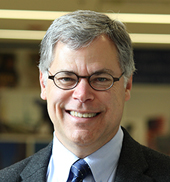Preventing Urban Environmental Health Issues: Q&A with Environmental and Occupational Health Chair Jerry Fagliano
April 22, 2016

Jerry Fagliano, MPH, PhD, is an associate clinical professor and chair of the Department of Environmental and Occupational Health. Fagliano joined the school in September 2015 after 30 years in public health practice at the New Jersey Department of Health. He was the senior environmental epidemiologist, managing programs in environmental and occupational health surveillance, hazardous site assessment, and disease cluster investigation. His study of a cluster of pediatric cancer cases and its link to contaminated well water was featured in Dan Fagin’s book “Toms River,” which won the Pulitzer Prize for nonfiction in 2014.
What are some of the latest developments in Environmental and Occupational Health here at Drexel?
There has been a resurgence in public attention to environmental issues. From Flint’s drinking water, to air pollution in Asian cities, to the spread of Zika virus, to global climate change, it seems like every day there’s more news coverage on an issue in environmental or occupational health.
We are bringing these current issues into the classroom. For example, in this Winter’s core course on environmental and occupational health, we held a mock Paris meeting on climate change to engage students in the complex technical and policy issues facing nations on this topic. This spring, we’ve introduced two new courses, one on public health impacts of climate change, and one on risk communication during public health crises.
Through her Firefighter Injury Research and Safety Trends (FIRST) center, Jennifer Taylor’s team has been documenting injury risks in paramedics and other first responders, and investigating physical as well as psychological factors that increase risk. Last fall, Esther Chernak’s Center for Public Health Readiness and Communication conducted several training sessions on risk communication for local emergency planners across the Commonwealth. These projects exemplify the Department’s commitment to engage with worker groups and communities to improve population health.
What made you decide to go into academia after your career as an environmental epidemiologist in government?
In my years in government, I came to appreciate how good research could inform policy development and drive actions to protect health, so I’m looking forward to expanding research in policy-relevant directions.
I hope to use my 30 years of experience to prepare the next generation of public health leaders with skills to address the new challenges they’ll face in the coming decades. I’d like our graduates not only to be technically proficient, but also to embody timeless public health values such as advocacy for environmental equity and justice.
How is the department aiming to improve health in cities like Philadelphia?
We welcome opportunities to work with city government and agencies. We can work with government officials to provide context around emerging public health issues, and can help our local agencies interpret health and environmental data they are collecting.
In March, for example, I was asked to provide testimony at a City Council hearing to provide context from a public health perspective on lead in drinking water. We discussed ways the city and universities can work together to better understand determinants of lead exposure and the challenges to improve the aging water delivery infrastructure. We also talked about ways to educate the public on simple steps to reduce lead exposure from water, such as running the faucet or fountain for a few minutes before using it to make beverages in the morning, or always using cold water for cooking and drinking.
Earlier this month at Dornsife, I had the pleasure of working with student organizations to hold a “teach-in” discussing the Flint water crisis during National Public Health Week. We brought in colleagues from Medicine and the Department of Epidemiology and Biostatistics to talk about lead exposure in Flint, but also more broadly about stressors (including lead) that affect children’s development, health disparities, and what can be done to ensure healthy environmental and living conditions for children in all our cities.
How is the field of public health changing?
It seems there is a growing need and willingness to break down silos, whether in academia or in government, when it comes to addressing most public health issues. So often, the solutions to our complex public health problems require bringing people together from different disciplines within and beyond those traditionally thought of as “public health.”
For instance, the Zika virus is spreading throughout the geographic range of the mosquito species that transmits it. Changes in climate may affect the range of these mosquitos, so it’s important for epidemiologists to team with experts in climate forecasting and ecosystem dynamics, among others, to understand how best to prepare for, or prevent, the virus’s spread.
Do you have any tips for students or recent alumni, in Environmental and Occupational Health or otherwise?
No matter what you do, keep yourself grounded in principles of ethical public health practice. Keep your eye on doing good in the world. Always ask yourself, “Is this the right thing to do?”
Also, always listen to the people you are trying to serve. Workers and community members have really important insights into their environmental conditions and how to break down barriers to health-promoting practices.